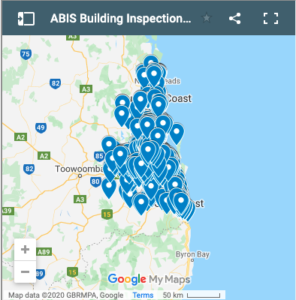While most building and pest reports will outline a list of minor faults and defects, what are some of the big issues that should set your alarm bells ringing?
Structural Issues
Structural cracking associated with movement of the footings or slab can be a serious problem due to the difficulties and costs associated with rectification. Insufficient drainage, ground movement, under-design and/or poor construction methods can lead to foundation movement. Typically, your inspector will recommend a further investigation by an engineer if symptoms of this type of problem are present at the time of the inspection. Do not proceed with your purchase until this has been done and you know what you’re up for.
Most houses undergo “settling” of some kind, where the weight of the home causes it to settle into the ground over time, resulting in hairline cracks. Many cracks are no big deal, but others, because of their size and pattern, can indicate a more serious problem.
Drainage / Water Issues
Water is public enemy no one when owning and looking after a home. Commonly, problems stem from poor ongoing home maintenance. Standing water, fungal decay, water staining or other evidence of water entering into a home are defects that can cause serious problems if not addressed promptly. Failing to replace a broken roof tile or to keep timber well painted may lead to damage that compromises a home’s structural integrity. The presence of excessive moisture creates conditions that attract timber pest activity such as fungal decay (wood rot) and termites.
Water issues can be anything from a leaking roof or skylight to deteriorated guttering and downpipes, to faulty plumbing such as a leaking shower or poor drainage. Roof leaks can lead to wood decay to internal frames and attract termites. Shower leaks can also be more serious than they appear. In bathrooms of older homes or those renovated by owners, waterproof membranes are often missing or insufficient behind tiles so that as water penetrates tiles and grouting over time it rots the supporting floor.
Termite Activity
Even if termite activity is not detected, in most homes inspected there are conditions present that encourage timber pests (fungal decay, termites and wood borers). Because of our warm wet Queensland climate, the use of timber in the construction of homes and our love for DIY home improvements and gardening, virtually all homes are susceptible to termites. Although only a handful of the hundreds of species of termites in Australia are destructive, those few species cause many millions of dollars of damage each year.
Unfortunately, the hidden nature of termite behaviour means that a lot of damage can occur before the activity is detected. In the worst cases, wood-framed structures can be rendered structurally unsound, dangerous and even uninhabitable.
Roof Problems
A sagging roofline or water damage to ceilings are often signs of costly roof issues, depending upon the nature of the problem, the size of the roof and the type of materials. Because replacing a roof is such an expensive exercise, it is important to get a building inspector to closely inspect the roof void and where issues are raised, a roofing company consulted for further advice.
Mould
With moisture and poor ventilation comes mould. While surface mould in poorly ventilated bathrooms is normal, black mould found in a home’s basement or crawl space can cause asthma and many other serious health problems. When black mould is present, it’s almost always indicative of a larger, more serious issue. It could be present due to cracks in the foundation where water has seeped through, or due to costly issues with the home’s plumbing. Regardless, black mould can take a lot of very expensive remediation efforts.
Timber Rot (Fungal Decay)
When timber has a moisture content of 15% or more, fungal decay or wood rot will start. The rate of growth of this fungus will depend upon the species of timber and the presence of treatment such as LOSP. Use of inappropriate timber or poorly done renovations can promote fungal decay of timber which is potentially expensive to fix particularly if it is extensive and/or involves structural timbers.
Safety Issues
Although a building and pest inspection is not a safety audit, the building inspector may see some safety issues during the inspection process. Out of a duty of care, these hazards or safety issues are noted in a section of the report. Removal of these hazards should be dealt with by a recommended professional as a matter of urgency.
Noncompliant Building
Although a building and pest inspection is not a certification for compliance, issues may be noted for further investigation by a certifier. In many older homes or those renovated by owners, compliance approvals are often missing for structures such as extensions, carports, and sheds. Commonly, built-in-under rooms are not of legal height and may be deemed to be uninhabitable so that the property you thought you were buying turns out to be a lot smaller in reality.
The very expensive consequence of purchasing a property with compliance issues is that the local council can issue you with an order to rectify or even demolish. So it’s always advisable to have your solicitor conduct searches, especially whenever building compliance is suspect.
ABIS is a fully Qualified Building Inspector and we strive to provide our clients with a high-quality inspection service at a very competitive price.




